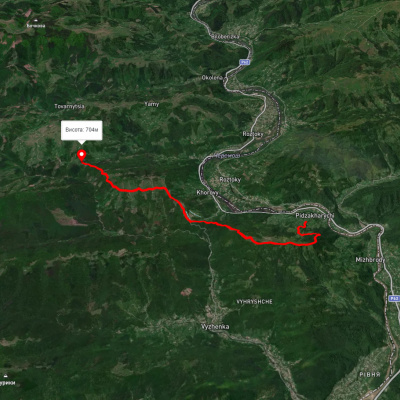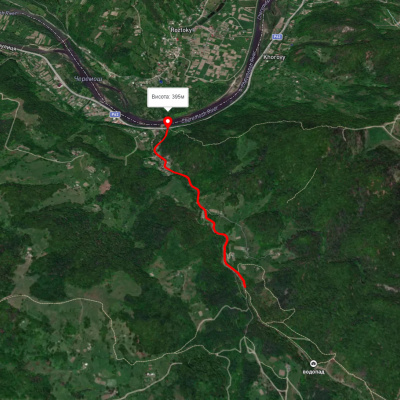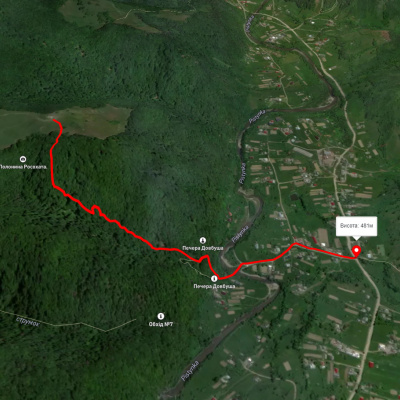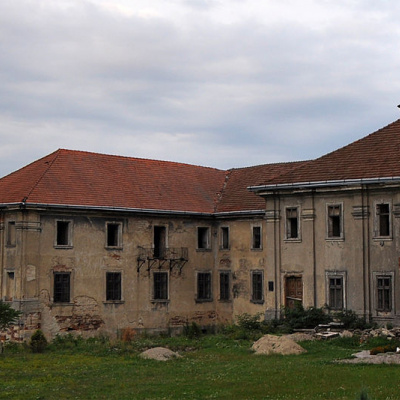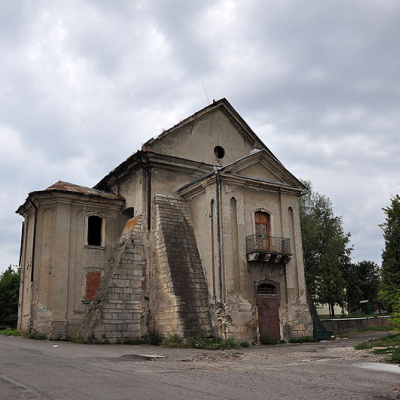Gorodenka
Today, Horodenka is a district center in the Ivano-Frankivsk region with a population of about 10,000 people. A number of industrial enterprises operate in the town, including a sugar factory, a cheese factory, and a cannery. The territory of modern Horodenka became part of the Kyivan state in the late tenth century. The Tale of Bygone Years mentions that in 993, Prince Volodymyr the Great marched on the White Croats who inhabited a part of present-day Galicia. These lands were fortified with palisades and log cabins, which were called "ohorod." It is believed that the name of the city comes from this word, "ogorod.
The first written mention of Horodenka dates back to 1195. Back then it was a settlement of farmers and artisans. In 1491, Tsar Stephen III the Great of Moldova burned Horodenka, Sniatyn, and Kolomyia to the ground. In the 15th century, according to some reports, a castle was built here-a medieval fortification, a border castle of the Polish-Lithuanian Commonwealth. At that time, the border market settlement of Horodenka did not yet have the status of a city. During the XV-XVI centuries, Pokuttya was a disputed territory between Poland and the Moldavian principality, and in the XVI-XVII centuries it was subjected to devastating attacks by the Turks and Tatars, so the Horodenka stronghold was to some extent strategic. In 1648, the castle was destroyed by the rebels of Semen Vysoczan and was never restored.
Since the seventeenth century, Armenians settled in the town, and for more than a hundred years they maintained the entire local trade. The influence and wealth of the Armenian community is evidenced by the construction of a large Armenian church in 1706, the oldest surviving monument in the city. The church yard was surrounded by a high wall with a beautiful gate, but this did not prevent robbers from looting it to the ground in 1779. During the Soviet era, the church was used as a warehouse.
The Jewish community has also left a significant mark on the history and culture of Horodenka. They appeared here in the sixteenth century. In 1743. Mykola Potocki granted the Jewish community privileges in trade and crafts, and allocated land for the construction of a synagogue and a kirkut. By the beginning of the twentieth century, the Jewish population accounted for one third of the city's population. Jews held about half of the seats in the municipal government. During the Holocaust, the Jewish community was completely destroyed. According to the 2001 Ukrainian census, there are no Jews living in Horodenka. The Jewish surnames Orodenker and Horodenchyk are associated with the name of the town. Among the Jewish monuments, the Great Synagogue and part of the kirkut have been preserved.
Mykola Vasyl Potocki played an important role in the development of the town. He planned to establish a new residence here, where he built a church with a monastery of Theatynites, a Greek Catholic church, and a bridge.
The architect Bernard Meretyn designed the Church of the Immaculate Conception of the Blessed Virgin Mary, and the exterior was decorated by Ivan Pinzel, a famous sculptor of the mid-18th century. The church was built between 1745 and 1769, and the last reconstruction took place in the 1920s. During the Soviet era, the premises of the monument housed a vocational school for machine operators, during which the ancient altar was cut into firewood and burned. Only one sculpture was preserved. In the church itself, two parishes perform their rites: Catholics in the middle, and Greek Catholics in the right wing.
The church is located near the center of Horodenka. The monastery complex, in addition to the church, also includes a building of monastic cells.
There is also a column with a statue of the Blessed Virgin Mary, a monument of monumental art from the 18th century.
The Church of the Assumption of the Blessed Virgin Mary was also designed by Bernard Meretyn and built in 1763 for the Greek Catholic community of the city at the expense of magnate Mykola Vasyl Potocki. According to the legend, based on one of the versions of the folk song "Song of Bondarivna," the church was built as a sign of the magnate's atonement for the murder of Bondarivna, a girl from the neighboring village of Cherniatyn. The church has an icon of the Blessed Virgin Mary, which occasionally flows with myrrh.
Next to the church, right on the playground, there is an incomprehensible miniature castle. Locals said that it is a model, a smaller copy of some ancient fortification.
Returning to the historical buildings of Horodenka, it is also worth mentioning St. Nicholas Church, built in 1879 at the expense of the parishioners themselves. The buildings built at the expense of the magnate look more magnificent. The church was recently restored, so it can be confused with a new building.
Interesting facts about Horodenka
- Horodenka, or rather its prototype Karrodinon, is marked on Ptolemy's map. This suggests that the city is much older (approximately 200-300 years) than the first official mention. Namely, in 1195.
- The famous artist Ioan Pinsel had a hand in the local architecture. The sculptor once decorated the Church of the Immaculate Conception of the Blessed Virgin Mary. The building was designed by Bernard Meretin and was built between 1745 and 1769.
- The Armenian Church is the oldest building in the city. It was built back in 1706. Today it is an abandoned building that is deteriorating more and more every year.
- There is also a small religious miracle here. Namely, the already mentioned Church of the Immaculate Conception. The fact is that there are two parishes in the church at once: the Catholic territory in the middle and the Greek Catholic territory on the right.
- In the mid-eighteenth century, Mykola Basel Potocki chose the city as his residence. In order to strengthen his position and show off his wealth, the magnate traveled the streets in a gilded carriage drawn by bears. This not only did not work, but also made him hated by all the locals.
- The Church of the Immaculate Conception became Pinsel's most ambitious work. The altar sculptures alone were over three meters high. The grandeur does not end there. For example, inside the church, Pinzel decorated it with almost three hundred angelic heads, and this is without taking into account other sculptures and details!
- A church in the place of sin. This is how the locals call the Church of the Assumption of Mary. And all because, according to legend, Potocki ordered the construction of a sacred building on the spot where he killed the girl Bondarivna. There is even a song about it.
- One of the oldest viaducts in Ukraine is literally hiding in the bushes. It is a three-arch bridge over the Yamhoriv stream. All we know is that the structure was built during the reign of Potocki. This is approximately 1745-69.
- There were times when Armenians and Jews made up more than 60% of the city's population. Mass settlement was facilitated by the granting of the Magdeburg Law on February 13, 1668.
- The first postcard (postcard) of the city appeared in 1896. According to various sources, its origin: Austrian Empire, Holland, or Belgium.
- Today, an unknown artist works in the city. One of his outstanding works is a painting of the Blessed Virgin Mary carved in a tree trunk. The icon is located near the Armenian Church.
- Horodenka is the only city in the entire Ivano-Frankivsk region where there is a sculpture by Pinsel. It is a statue of the Virgin Mary in the Church of the Immaculate Conception.
- It's a mini-Horodenka. It is a large three-story model of a city surrounded by a large moat. You can see this miracle in the park near the bus stop.
- "The Capital of Potocki." The famous family not only had their residence here, but also turned the city into their own capital. The unofficial status is still confirmed by the family's coats of arms, which are depicted on almost every house.
- The first settlements on the territory of our city appeared in the Paleolithic period (400,000 - 200,000 BC). In 1923, an archaeologist and historian Yurii Polianskyi found dishes, clothes, and household items that confirm this statement on the outskirts of the city.
Які туристичні (пішохідні) маршрути проходять через/біля Gorodenka?
Пропонуємо пройти такі туристичні (пішохідні) маршрути через/біля Gorodenka: пер. Німчич - Протяте Каміння, Смугарські водоспади, Шешори - Росохата, с. Буковець – Писаний Камінь – с. Буковець, Писаний Камінь – с. Буковець, с. Космач, через г. Ротило, г. Грегіт, г. Біла Кобила до с.Буковець
